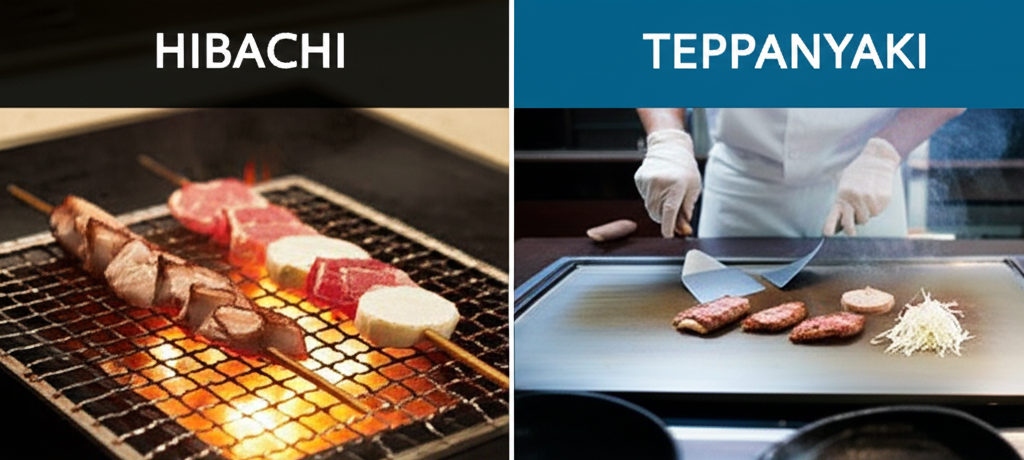Hibachi vs. Teppanyaki: Understanding the Differences


Hibachi vs. Teppanyaki: Understanding the Differences
If you've ever been to a Japanese steakhouse in the United States where chefs cook on a flat grill at your table, you've likely heard it called a "hibachi restaurant." However, what you experienced was most likely teppanyaki cooking. The confusion between hibachi and teppanyaki is common, even among culinary enthusiasts. Let's clarify the differences between these two Japanese cooking styles.
Historical Origins
Hibachi
The word "hibachi" (火鉢) translates to "fire bowl" in Japanese. Traditional hibachi are heating devices that date back to the Heian period (794-1185) in Japan. They were originally designed as portable heating devices, consisting of a round, cylindrical, or box-shaped container made of heat-resistant materials like ceramic or cast iron, filled with burning charcoal.Teppanyaki
Teppanyaki is a much more recent development. The word comes from "teppan" (鉄板), meaning iron plate, and "yaki" (焼き), meaning grilled or cooked. This cooking style was popularized in Japan after World War II and was commercialized for Western tourists by the Misono restaurant chain in 1945. Benihana founder Rocky Aoki later brought this concept to America in 1964, where it became wildly popular.Cooking Equipment
Hibachi
Traditional hibachi grills are small, portable grills with an open-grate design. They typically have:Modern hibachi grills sold in the West often resemble small charcoal barbecues and maintain the open-grate design.
Teppanyaki
Teppanyaki cooking uses a very different setup:Cooking Techniques
Hibachi
Traditional hibachi cooking involves:Teppanyaki
Teppanyaki cooking features:Typical Menu Items
Hibachi
Traditional Japanese hibachi might include:Teppanyaki
The teppanyaki menu commonly features:The Dining Experience
Hibachi
In Japan, traditional hibachi dining is:Teppanyaki
The teppanyaki experience is characterized by:Why the Confusion?
The term "hibachi" became popularized in America to describe the teppanyaki style of cooking largely due to marketing decisions when these restaurants first appeared in the United States. The word "hibachi" was likely deemed more accessible and memorable for American diners than "teppanyaki."
This misnomer has persisted for decades, to the point where most Americans associate hibachi with the flat-top cooking style that is actually teppanyaki. Even many restaurant owners and chefs in the U.S. use the terms interchangeably, further cementing the confusion.
Modern Adaptations
Today, both cooking styles have evolved:
Modern Hibachi
Modern Teppanyaki
Conclusion
While both hibachi and teppanyaki represent Japanese cooking traditions, they differ significantly in equipment, technique, and dining experience. What most Americans know as "hibachi" is actually teppanyaki cooking.
Understanding these differences enhances appreciation for both cooking styles and their unique contributions to culinary culture. Whether you prefer the authentic charcoal-grilled flavors of true hibachi or the entertaining spectacle of teppanyaki, both offer delicious ways to experience Japanese cuisine.
Next time you're at a Japanese steakhouse watching a chef flip a shrimp into his hat, you can impress your dining companions by correctly identifying it as teppanyaki cooking!